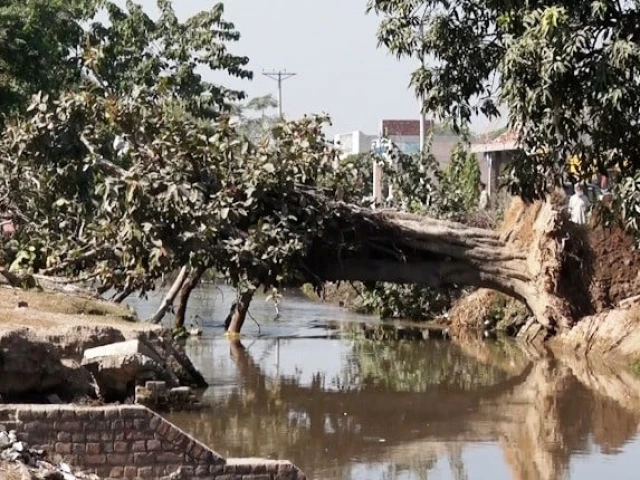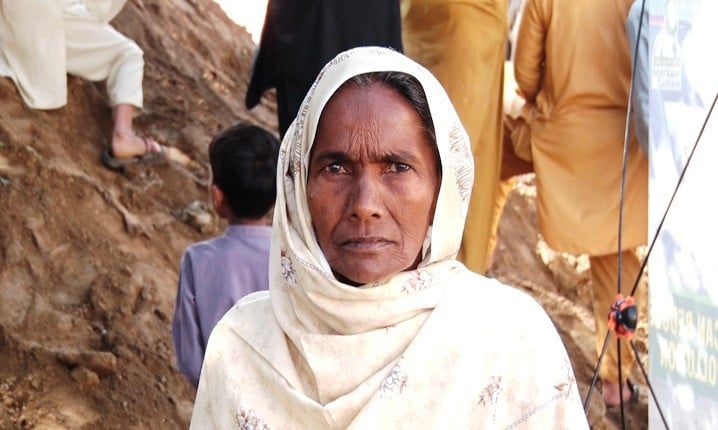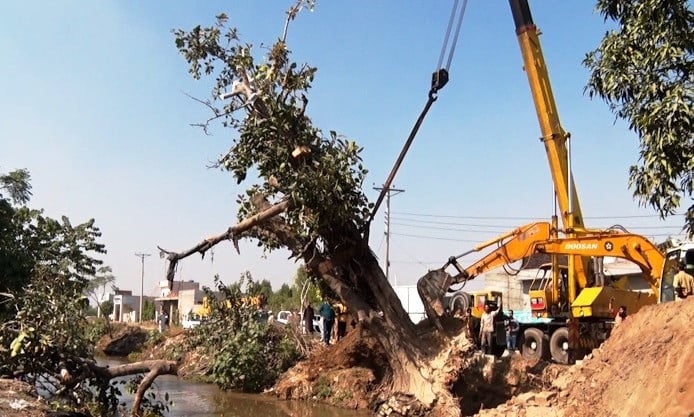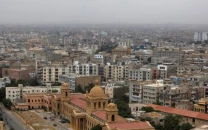When a 50-year-old banyan tree breathed again
Forest Department’s remarkable rescue in Kahna

In a rare and emotional rescue mission, the Punjab Forest Department has successfully replanted a 50-year-old banyan tree that had fallen into a canal near Kahna’s Haveli Cheetu Wali area after being uprooted by strong winds. The massive tree, deeply intertwined with the village’s history, was originally planted half a century ago by the late husband of an elderly resident, Majeedan Bibi, for whom it symbolized an entire lifetime of memories.
When the centuries-old banyan crashed to the ground, it left the family devastated. “It felt as if the last support of my life was gone,” said Majeedan Bibi, recalling how she and her children sat beside the fallen tree for hours, weeping. But on Friday, as a crane lifted the colossal trunk upright under the supervision of Forest Department officials, the sorrow in her eyes turned to joy. As the tree’s thick branches began to rise again, the villagers, especially children who had grown up playing in its shade, erupted into cheers and chants of “Pakistan Zindabad.” The scene was moving, like witnessing a wounded living being return to life.

The complex replanting operation was led by environmentalist and tree conservationist Abdul Basit Baloch in collaboration with the Forest Department. Baloch said he immediately contacted the department when he learned that the historic banyan had been yanked out by a combination of high winds and water flow from the canal. “With the help of cranes and skilled experts, we managed to lift and replant it exactly where it once stood,” he said. “We had to trim some branches so that the roots could be firmly embedded again. The wounds were treated with turmeric paste and wrapped with cloth to encourage new shoots to grow.”
Baloch added that the operation wasn’t merely about saving a tree but about saving lives. “A single healthy tree produces enough oxygen for 37 people. So today, in a sense, we have saved 37 lives,” he said.
Read: Urbanisation is a 'bird-en' that Karachi can not sustain much longer
Chief Conservator of Forests (Central Punjab) Saqib Mahmood commended the effort, saying that modern machinery and specialized techniques now make tree relocation possible without compromising their survival. He noted that the banyan is among the longest-living trees in the world and plays a vital role in purifying air, producing oxygen, and mitigating smog. “In recent years, dozens of large trees that were either about to be cut down or had fallen naturally have been relocated successfully and have resumed growth,” he explained.
Sub-Divisional Forest Officer Ayesha Nawaz highlighted the banyan’s deep cultural and historical significance. “The banyan, known locally as bohr or bohar, is not just a tree, it’s a symbol of continuity and renewal. Its aerial roots, when they touch the ground, grow into new trunks, which is why it represents the cycle of life,” she said. She also noted that followers of Hinduism and Buddhism regard the banyan as sacred, as it was traditionally a site for prayer and meditation in ancient times.
Experts estimate that the tree’s roots will take two to three years to firmly reestablish in the soil. But even in its early recovery, signs of life have already begun to return. Birds have started nesting in its branches once again, and the villagers visit daily to witness its revival.
As the once-fallen banyan stood tall again, its leaves rustling in the soft breeze, Majeedan Bibi quietly smiled, her eyes glistening. To her, and to the entire village, it was more than a tree restored, it was life itself taking root once more.




















COMMENTS (1)
Comments are moderated and generally will be posted if they are on-topic and not abusive.
For more information, please see our Comments FAQ